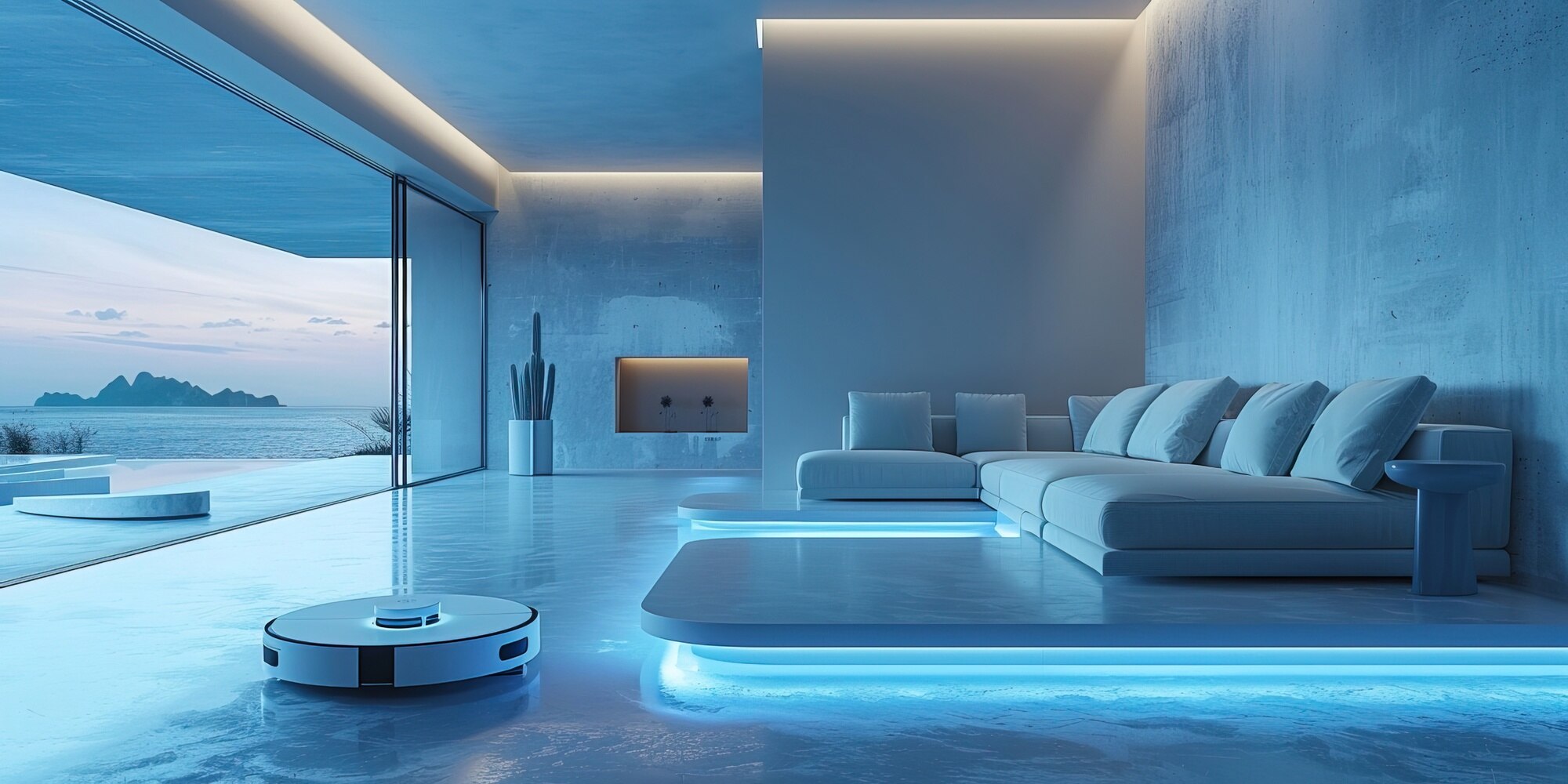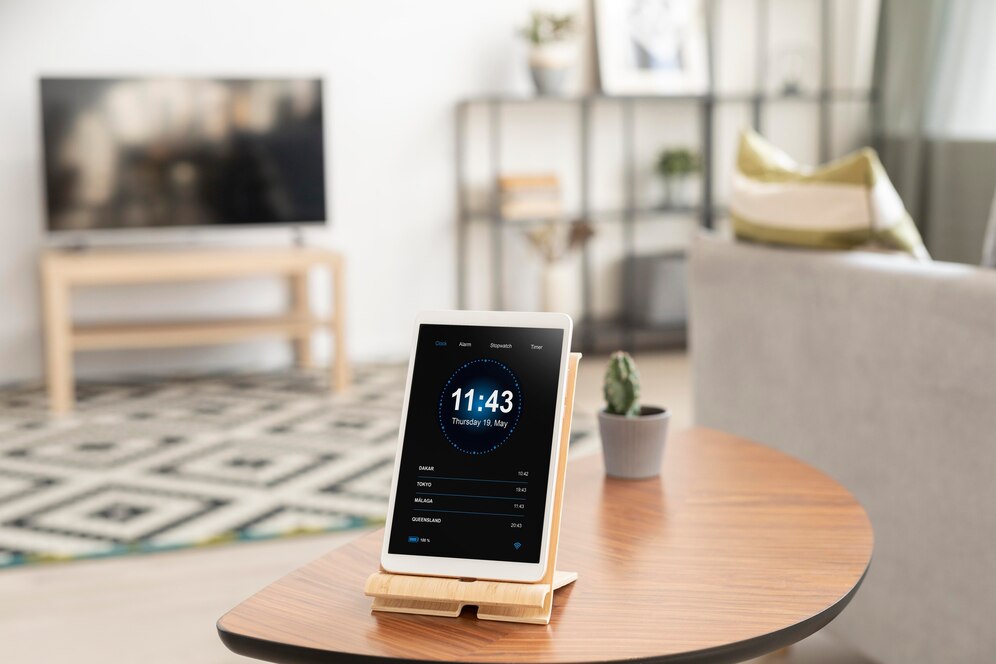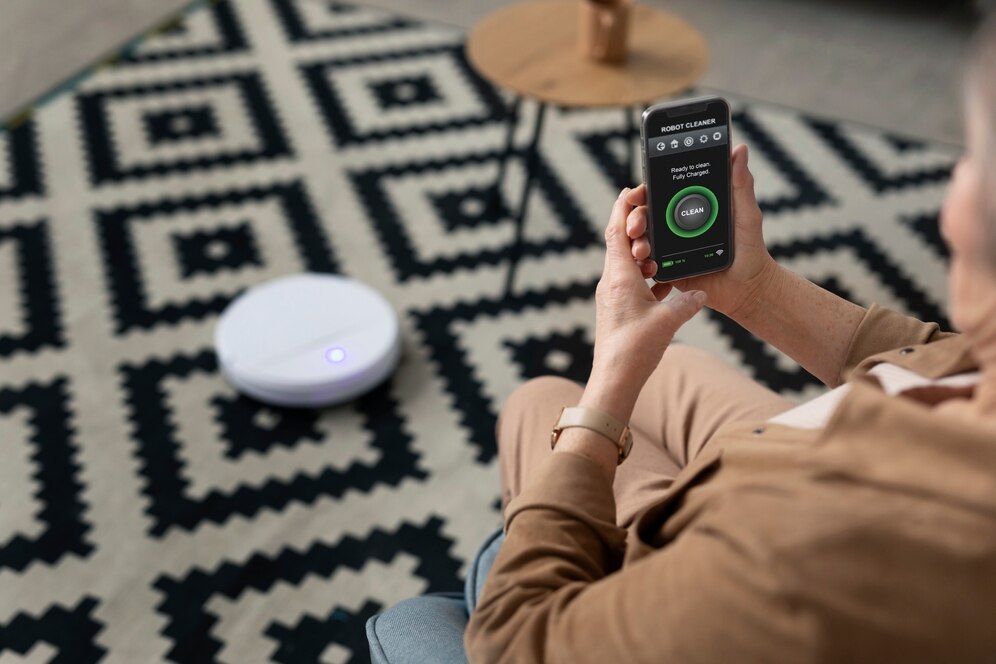
How Smart Homes are Revolutionizing Modern Living
Smart home technology is transforming the way we live, making homes more efficient, secure, and convenient. Today’s homes are changing fast. They now have automated lighting and AI-powered assistants. These features make our living spaces more connected, comfortable, and functional.
Home automation has changed how we live. It uses smart technology to make daily tasks easier. It also boosts energy efficiency and improves security. If you want to buy some smart devices or turn your home into a fully automated one, it’s important to know the latest smart home trends. These trends can really change your daily life.
This article looks at the newest smart home trends. It covers top automated home tech and innovative smart devices. These advancements are changing how we live today. We’ll also discuss the benefits of home automation, its future prospects, and how it’s changing the way we interact with our homes.
1. The Evolution of Smart Homes

The Rise of Home Automation
Home automation has advanced significantly over the past decade. What started as simple remote-controlled lighting and security systems has now evolved into fully integrated smart home ecosystems. The latest trends include:
- Voice-Controlled Assistants: AI systems such as Amazon Alexa, Google Assistant, and Apple HomeKit let homeowners manage devices using voice commands.
- Smart Security Systems: Advanced surveillance cameras, motion detectors, and biometric door locks enhance home safety.
- Energy-Efficient Solutions: Smart thermostats, automated blinds, and energy monitors help cut energy use and save money.
- IoT (Internet of Things) Connectivity: Connecting many devices together makes automation and syncing easier.
- AI-Powered Predictive Learning: Homes that adapt to user habits by adjusting lighting, heating, and appliances.
The Benefits of a Smart Home
The advantages of smart home technology go beyond just convenience. Homeowners can now experience enhanced security, efficiency, and a personalised living experience. Here’s how:
- Convenience: Automating daily tasks saves time and effort, making household management easier.
- Security: Smart locks, video doorbells, and AI alarms offer around-the-clock safety and monitoring.
- Energy Efficiency: Automated systems optimise energy usage, reducing utility costs and carbon footprints.
- Personalisation: Smart homes adjust to what users like. They provide custom lighting, temperature, and entertainment options.
- Remote Accessibility: Users can control their home’s features from anywhere using smartphone apps.
- Higher Property Value: Homes with smart technology appeal more to buyers and can boost resale value.
Quick Guide
What’s Happening in Smart Homes Today?
- Voice Assistants: Control your home with Amazon Alexa, Google Assistant, or Apple HomeKit.
- Smart Security: From biometric locks to AI-powered cameras, safety is smarter than ever.
- Energy Efficiency: Smart thermostats and lighting systems cut bills and your carbon footprint.
- Seamless Control: Use a central hub or app to manage everything—from your lights to your kettle.
- AI & Learning: Your home now adapts to your habits—like preheating the oven before dinner or dimming the lights at bedtime.
Pro Tip
Start small. You don’t need to overhaul your entire house in one go. Begin with a smart speaker or thermostat, then build up your system over time. Look for devices that work together—compatibility is key to a seamless smart home.
Important
Smart home technology can make life easier—but it also comes with responsibilities. Always update software, use strong passwords, and secure your Wi-Fi network. Protecting your digital home is just as important as securing the front door.
2. Key Smart Home Devices and Technologies
Smart Home Hubs
A smart home hub acts as a central control system, integrating multiple devices. Popular hubs include:
- Amazon Echo: Powered by Alexa, it controls smart lights, thermostats, and appliances.
- Google Nest Hub: Offers voice control and integrates with Google’s ecosystem.
- Apple HomePod: Works with Apple HomeKit for seamless automation.
- Samsung SmartThings Hub: It supports many smart home protocols. This makes it a great choice for different brands.
Intelligent Lighting Systems
Smart lighting solutions provide energy efficiency and convenience:
- Philips Hue: Customisable colour options and remote control.
- LIFX Smart Bulbs: Wi-Fi-enabled, no hub required.
- Motion-Sensing Lights: Automatically turn on and off based on movement, improving security and efficiency.
- Circadian Lighting: Changes brightness and color temperature to match natural daylight. This helps improve sleep and boost productivity.
Automated Climate Control
Smart thermostats adjust home temperatures based on user habits:
- Nest Learning Thermostat: Learns preferences and reduces energy costs.
- Ecobee SmartThermostat: Includes voice control and room sensors.
- Honeywell Home: Offers remote access and scheduling features.
- Smart Ceiling Fans: Adjust speed and direction based on temperature and occupancy.
Smart Security and Surveillance
Advanced security systems provide real-time monitoring and alerts:
- Ring Video Doorbell: Allows homeowners to see and communicate with visitors remotely.
- Arlo Security Cameras: Wireless surveillance with cloud storage and AI-based motion detection.
- August Smart Lock: Enables keyless entry and remote access control.
- Smart Smoke and CO2 Detectors: Send alerts to smartphones in case of fire or gas leaks.
AI and Machine Learning in Smart Homes
Artificial Intelligence (AI) enhances automation and predictive capabilities:
- Smart Appliances: Refrigerators that track groceries, ovens with automated cooking settings.
- AI-Powered Cleaning Devices: Robot vacuums, such as Roomba, learn floor plans. They also find the best cleaning paths.
- Personalised Home Experiences: AI customises lighting, music, and temperature settings based on routines.
3. Future Trends in Smart Home Technology

Internet of Things (IoT) Integration
IoT enables seamless connectivity between smart devices, improving automation and efficiency. Future advancements include:
- Interoperability Standards: Unified communication between different brands.
- Enhanced Data Security: Stronger encryption to protect smart home networks.
- 5G Connectivity: Faster, more reliable smart home automation with minimal latency.
- Cloud-Based Home Management: Centralised platforms for monitoring and controlling all connected devices.
Sustainable Smart Homes
Eco-friendly technology is becoming a priority in home automation:
- Solar-Powered Smart Devices: Reduce reliance on traditional energy sources.
- Water-Saving Systems: Smart irrigation and leak detection to conserve water.
- Zero-Energy Smart Homes: Buildings designed to generate as much energy as they consume.
- Smart Grid Integration: Homes that adjust energy usage based on real-time electricity demand and pricing.
The Role of AI and Robotics
The future of smart homes will see even greater advancements in AI and robotics:
- Fully Autonomous Homes: AI-driven assistants managing entire households.
- Predictive Maintenance: AI detects and prevents system failures before they occur.
- Home Robots: AI-powered assistants performing household chores and caregiving tasks.
- Augmented Reality (AR) in Home Design: Virtual simulations for home renovations and interior design planning.
Top 5 FAQs
1. Do smart homes really save energy?
Yes, they do. Smart thermostats, lighting, and energy monitors optimise usage, helping you cut both costs and environmental impact.
2. Can I turn my existing home into a smart home?
Absolutely. Most smart devices are designed to retrofit easily. You don’t need a brand-new build to enjoy automation.
3. Are smart homes safe from hacking?
With proper security steps—like encrypted networks, regular updates, and two-factor authentication—smart homes can be very secure.
4. What’s the most essential smart home device to start with?
A smart speaker or thermostat is a great place to begin. They’re affordable, easy to install, and instantly boost convenience.
5. Will my devices work together if they’re from different brands?
It depends. Choose devices that support common platforms like Alexa, Google Home, or Apple HomeKit. Or use a hub that supports multiple protocols.
Embracing the Future of Smart Living

Smart home technology is revolutionising modern living by enhancing convenience, security, and efficiency. Advancements in AI, IoT, and sustainable solutions mean the future of home automation will be even more innovative.
No matter if you want to add some smart devices or create a fully automated home, using smart technology will change how you live. Homeowners will gain more control over their living spaces as new innovations appear. This will make their homes smarter, more adaptable, and better for the environment.
Are you ready to make your home smarter? Begin with key smart devices. Then, slowly grow your automation system. Enjoy a tech-powered lifestyle that connects everything smoothly.